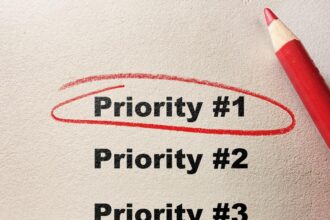As yields have risen from their historic lows, many retirees ask me if they should put all their savings in T-bills. This movement even has a name: T-bill and Chill.
Moving to the safety of U.S. government short-term bonds has an initial appeal for retirees. T-bills are one of the safest Investments in the world. Today, they pay more than a 5% yield, which exceeds the traditional 4% rule for retirement spending.
As safe as T-bills may seem, however, removing stocks from a retirement portfolio carries significant risks.
Retirees Are Long-Term Investors
Retirement is a marathon, not a sprint. Even for those who retire at the traditional age of 65, one should still plan for a 30-year retirement, if not longer. A recent J.P. Morgan study found that at least one of a non-smoking couple in excellent health has a 46% chance of living to 95. They have a 19% chance of living to 100.
Yet it’s easy for retirees to see themselves as short-term investors. Unlike saving for retirement, retirees draw from their savings every month to pay for needed expenses. This focus on income can cause retirees to see themselves as short-term investors. Yet, for most retirees, they are withdrawing a very small portion of their retirement savings every year.
There are at least two significant advantages when retirees see themselves as long-term investors. First, they realize their portfolios have time to recover from bear markets. And second, a long-term perspective underscores the need for their investments to outpace inflation (more on this in a moment).
Stocks Offer Needed Returns
Over 30 years, stock returns have far outpaced the return of T-bills. For example, since 1977, U.S. stocks have returned twice as much as T-bills, according to the online tool Portfolio Visualizer. The same is true for 15-year rolling periods. Since 1928, stocks have returned 9.80%, T-bills just 3.34%.
Of course, stock prices are more volatile than the price of T-bills. The standard deviation of stocks, a common measure of volatility, was five times higher than T-bills over the past 50 years. Yet if retirees see themselves as long-term investors, as noted above, it can give them the patience to handle this volatility. in addition, a well-diversified portfolio of stocks and bonds will dampen the volatility of a 100% stock portfolio.
For example, a 60/40 portfolio of U.S. stocks and T-bills had a standard deviation 40% lower than a 100% stock portfolio.
Inflation Can Erode the Value of Bonds
One of the most dangerous risks to a retiree’s savings is inflation. over a 30-year period, the price of goods and services can rise significantly, even if inflation seems modest from one year to the next. As we saw in 2022, however, it’s also possible for prices to rise sharply in a short period of time. Indeed, the most difficult time to retire was in the late 1960s due to the high inflation of the 1970s and early 1980s.
To combat inflation, retirees need to invest at least a portion of their savings in investments that will outpace the rise in prices. T-bills often do not yield more than inflation. In the long term, stocks have outpaced inflation. As part of a diversified portfolio, retirees can also consider investing some of their fixed income in TIPS (Treasury Inflation-Protected Securities), which hedge against inflation risk.
How Much Should You Invest In Stocks Before Vs In Retirement?
An investor’s allocation to stocks should change over time. A heavy stock concentration is generally recommended for those many years away from retirement. I think a portfolio of 90% stocks and 10% fixed income is reasonable for long-term investors saving for retirement. Some argue that even a 100% stock portfolio is ideal.
For what it’s worth, Warren Buffett recommended a 90% stock and 10% bond allocation in his 2013 letter to Berkshire Hathaway
BRK.B
As one nears and enters retirement, however, it’s recommended that they reduce their exposure to stocks. While they are still long-term investors, they now need to take yearly distributions from their savings. As a result, a higher allocation to fixed income is often warranted. This reduction in the allocation to stocks is known as the glide path. The term is part of life cycle investing, reflecting the change in asset allocation as one nears retirement.
The question still remains exactly how much a retiree should invest in stocks versus bonds. While the answer to this question will vary, the research behind the 4% rule can give us some meaningful guidelines. In his 1994 paper, Bill Bengan found that a portfolio consisting of 50% to 75% in stocks resulted in the highest initial safe withdrawal rate.
A retiree with more than 75% in stocks runs the risk of a 1929 stock market crash that saw stocks fall by 90% in 3 years. At the same time, a retiree who includes less than 50% of stocks in their portfolio runs the risk of 1970s-style inflation decimating their portfolio.
Perhaps for these reasons, the 60/40 portfolio has become a popular retirement option. However, the best portfolio for any retiree will depend on their specific circumstances.
Should You Ever Stop Investing In Stocks Entirely?
There may be circumstances where a retiree doesn’t need to invest in stocks. For example, a retiree who lives on Social Security benefits and perhaps a pension and doesn’t rely on their savings could choose to invest only in fixed income. Likewise, a retiree nearing the end of their life may not need to invest in stocks.
At the same time, individuals who don’t need to invest in stocks might be best suited to handle the risks and volatility of the stock market. Given the long-term outperformance of stocks over bonds, such a retiree may be better off in a 100% stock portfolio than a 100% fixed-income portfolio. Here, a retiree might consider estate planning, where the better long-run performance of stocks over fixed income may be ideal for those who will inherit the investments.
Conclusion
I’ll end with a quote from a paper Bill Bengen published in 1997, three years after his famous 4% rule paper: “As a final word, it is fair to conclude that cash is indeed “trash” in long-term investment portfolios, particularly when the client in seeking to maximize withdrawals.”
Read the full article here










